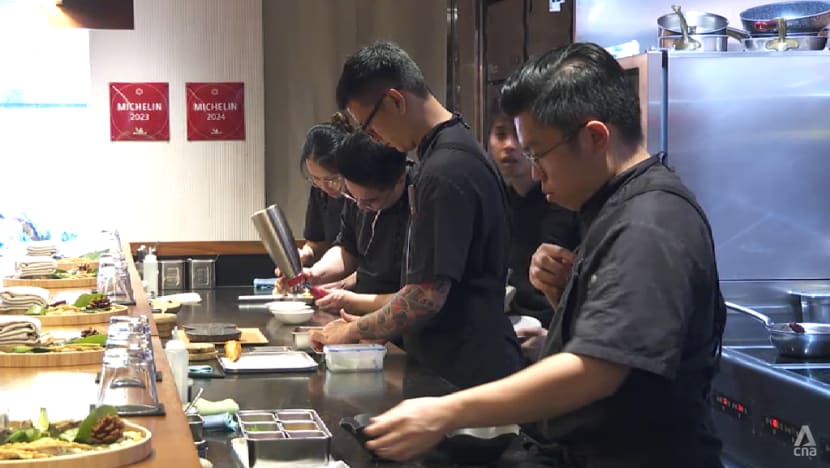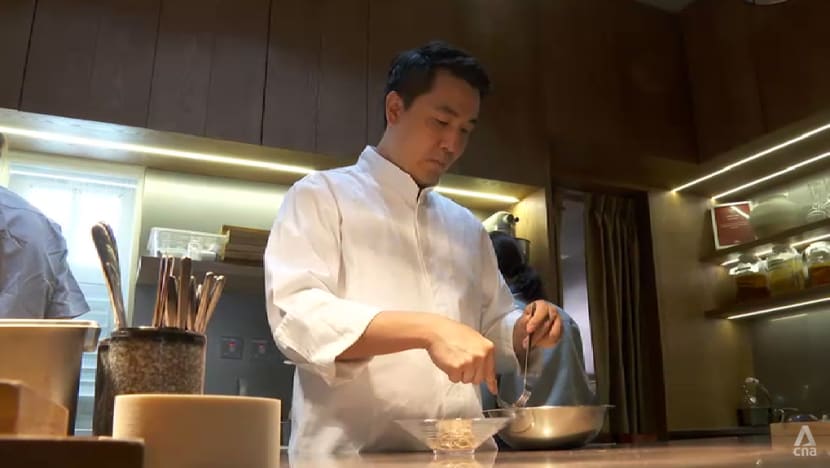Why a Michelin star isn’t enough for top restaurants to thrive in Singapore's tough F&B scene
The new list of Michelin-starred restaurants in Singapore will be unveiled on Thursday (Jul 24).

In Singapore’s ever-evolving F&B landscape, some restaurant owners say that having a star alone is not enough to ensure long-term success.

This audio is generated by an AI tool.
The new list of Michelin-starred restaurants in Singapore will be unveiled on Thursday (Jul 24).
With rising operational costs and intense competition in the dining scene, chefs are under increasing pressure to not just impress critics - but also to stay financially afloat.
STAYING RELEVANT
For many chefs, receiving a Michelin star is often a dream come true.
Yet in Singapore’s ever-evolving F&B landscape, some restaurant owners say that having a star alone is not enough to ensure long-term success.
“Having a Michelin star brings prestige to the restaurant. It helps people come through the front door for the first time, and it also shows that you're consistently good,” said Mr Nicolas Tam, executive chef and owner of Willow, a one Michelin-star restaurant serving contemporary Asian cuisine.
“But we still face the challenges that any other F&B outlet in Singapore does. We have to do a lot to bring people back,” he told CNA.
“We have to do a lot to face those expectations that people expect in the restaurant, and we also have our rising costs like manpower as well as ingredients and rental.”
Mr Tam noted that as the novelty of being a new restaurant fades, his three-year-old establishment - located in the Boat Quay area - must continuously reinvent itself to stay relevant.
“That’s difficult to do because in Singapore, there’s so many choices,” he added.

PERSONAL TOUCHES
From refreshing the menu to incorporating interactive table-side service, every effort at these restaurants is aimed at keeping diners engaged and coming back for more.
At Korean fine-dining restaurant NAE:UM, chef founder Louis Han said he believes this means continually redefining the dining experience beyond the food itself.
“I really try to talk to every customer who comes to my restaurant, so I try to show my appreciation,” he said, adding that the eatery also tries to refresh its menu to offer something interesting.
“NAE:UM has been around for four years, so there's a reason why we're doing major renovation. We really try to refresh our restaurant to look different,” he noted.
“So, my regular customers also feel that something is different. These are all the things that we try to keep up ourselves, to stay in the market.”
Mr Han noted that there are many perennial challenges that restaurateurs like himself struggle with, including high rental, rising ingredient costs and manpower constraints.
RISING COSTS, INTENSE COMPETITION
Market watchers noted that while accolades like Michelin stars attract crowds, they offer little protection against soaring operating costs and fierce competition.
Just last year, more than 3,000 food establishments closed down - the highest number in nearly two decades.
Analysts highlighted the strength of the Singapore dollar, which is prompting more Singaporeans to spend overseas. Meanwhile, it is dampening tourism demand as the city-state becomes more expensive.
Economist Song Seng Wun said the level of competition and the overall outlook are closely tied to the performance of Singapore’s economy.
Key factors include whether the country can sustain job creation, attract ongoing investment, and remain a desirable place for people to live and work.
The economic adviser at CGS International Securities Singapore added that success in Singapore’s F&B scene hinges on understanding diners’ preferences and adapting swiftly.



















